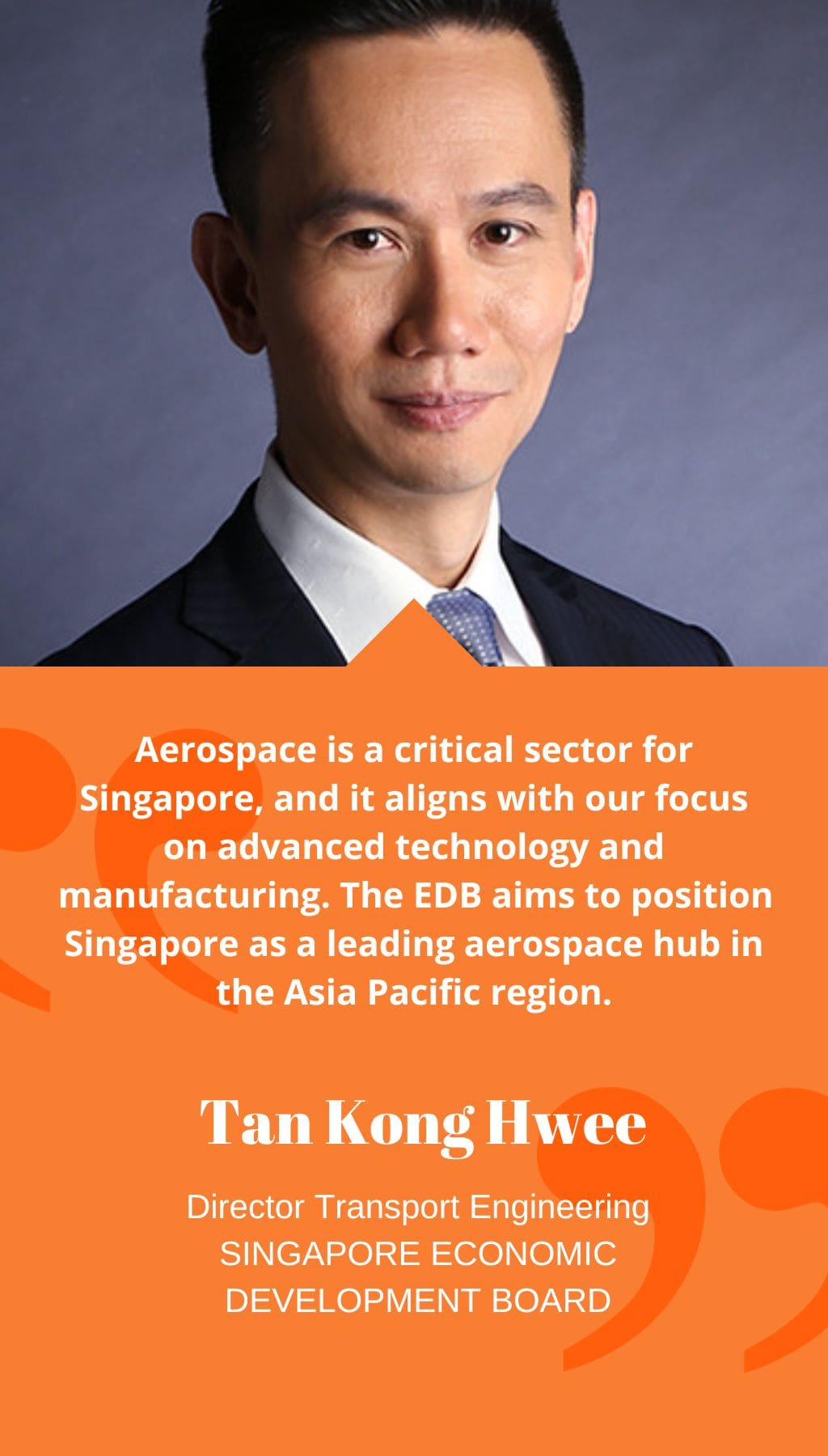
- Singapore | 10 March 2019

Can you discuss the importance of the aerospace industry for the country’s global standing in the region and what are the key objectives for the aerospace industry for the next few years?
Aerospace is a critical sector for Singapore, and it aligns with our focus on advanced technology and manufacturing. The EDB aims to position Singapore as a leading aerospace hub in the Asia Pacific region by remaining competitive and innovative in MRO (maintenance, repair and overhaul) and manufacturing. Singapore currently holds 10% of the global market share in MRO, and with the expected growth in traffic and demand in the region in the upcoming years, we are in a strong position to capture that growth in MRO and manufacturing. To achieve this, we need to collaborate with OEMs that have the technology to set up operations in our region, which will help increase our production capacity and productivity in the supply chain. Furthermore, we have invested substantially in technology and innovation to maintain Singapore’s leadership in the region.
What are the EDB’s key targets with Changi Airport T5 and Seletar Aerospace Park?
Changi Airport T5 is an integral part of Singapore’s long-term development strategy. Currently, there are three terminals at Changi, and with the fourth one opening in 2018, along with T5, our passenger capacity should double to 135 million per year. We plan to leverage the growth of commercial aviation and increasing wealth in the region to expand the aerospace industry. An industrial zone has been allocated within the new airport, which will be launched in the mid-2020s. Until then, Singapore will continue to use Seletar Aerospace Park for both runway-dependent and non-runway-dependent aerospace industrial operations. Presently, 60% of Seletar’s 160 hectares of industrial land has been committed. The development of the park and the new Changi T5 underscores our strong commitment to growing the aerospace industry.
The EDB has a strong push for implementing more robotics and automation within the industry. Could you elaborate on this and explain why you believe it is important?
The EDB collaborates with its sister agency, A*STAR, on technology innovation to coordinate Singapore’s strategic technological investments in aerospace to maintain our lead in the industry. We are exploring the application of robotics, automation, data analytics, and additive manufacturing. In the short term, we are focused on innovations and technology that can make Singapore more competitive, including adapting existing technology to aerospace applications. In the long run, Singapore aims to develop the capability to design and engineer new products and solutions for the market. We encourage our research institutions to collaborate with companies to achieve this goal. Technologies that interest Singapore include predictive maintenance, unmanned aircraft systems (UAS), and aircraft electrification.
What is the future of UAVs (unmanned aerial vehicles) in the country?
UAVs have the potential to be disruptive, and as a country, we must facilitate their use as long as they are safe for residents, air traffic, and property. We expect to see more of them flying in the upcoming years for various purposes, including surveillance, parcel deliveries, and inspection. We will learn how to deal with the challenges and risks associated with flying UAVs through test trials. The Civil Aviation Authority of Singapore (CAAS) has signed an MoU with Airbus to experiment with delivery drones, driven partly by Airbus’ R&D team in Singapore. The CAAS is interested in understanding the risks and benefits of using UAVs and how to adapt regulations, and they are partnering with the EDB in this process. The EDB’s focus is on encouraging innovation and remaining at the forefront of capturing economic opportunities that might arise from UAVs.














